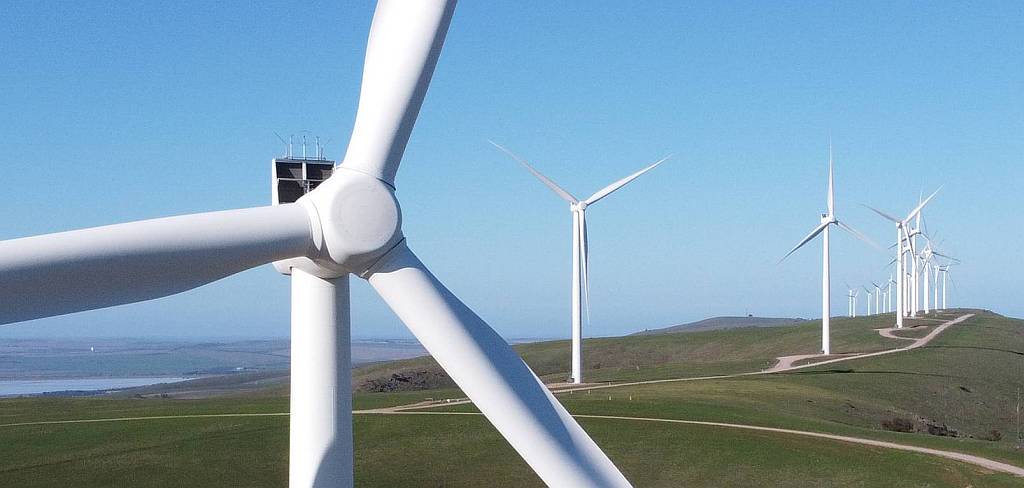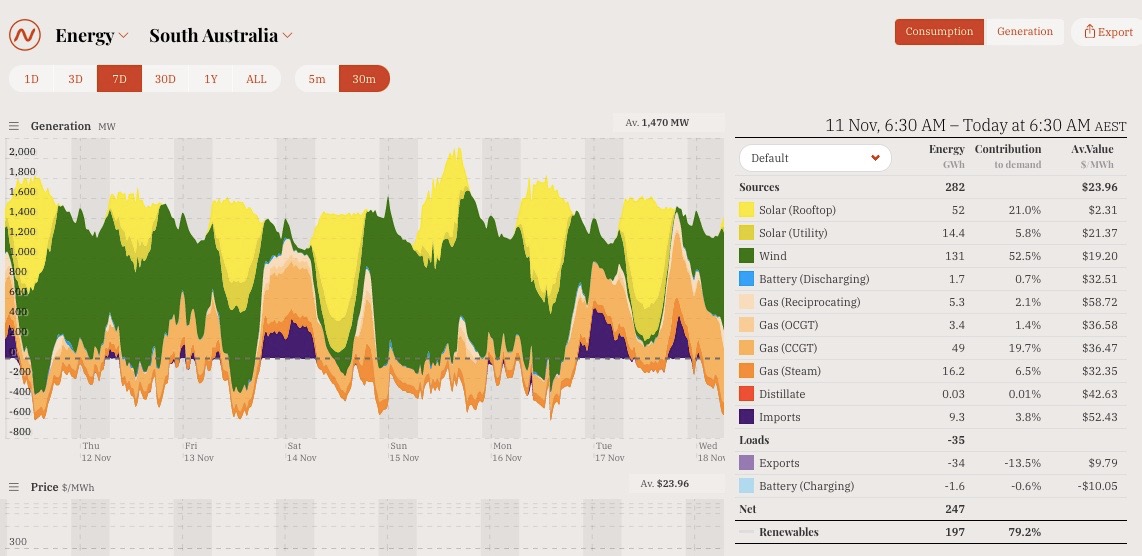
|
|
|
This page gives short summaries of, and links to, many articles on the Internet relating to the terminal decline of the gas industry.
It may be the only page on the subject in the internet that is continually updated.
|
Reasons to believe that fossil gas is a bad investmentAt least from the last quarter of 2020 it was becoming increasingly obvious that the gas industry was facing serious decline.In most cases, what is bad news for coal as an investment will also be bad news for gas as an investment so many of the reasons for coal being a bad investment will also be reasons why gas is a bad investment.
Batteries taking over from gasBig batteries taking over from gas peaking power generatorsAt the end of 2017 the Hornsdale Power Reserve in South Australia, at 100 MW power and 129 MWh of energy storage was the biggest in the world. By late 2020 a battery of 250 MW and 1,000 MWh (1 GWh) had been proposed by AGL, also in South Australia.The 250 MW capacity of this battery is more than all but two gas-fired power stations in South Australia.
It happens that AGL is the company that produces the most greenhouse emissions of any Australian company.
The above reference about the proposed AGL battery also mentions a number of other big battery proposals in Australia; there is no reason to doubt that the rest of the world will move in the same direction.
AGL announces another big batteryOn 2020/11/23 Angela Macdonald-Smith wrote an article for the Australian Financial Review titled "Vic to host AGL's next big battery". Quoting from the AFL article:"AGL Energy has flagged its second large battery project within 10 days, advising of plans to install a system of up to 200 megawatts at the site of its Loy Yang coal power station in Victoria to support the growth of weather-dependent renewables.Again, this is a battery with a large enough power and energy capacity to displace gas-fired peaking generators. Integration of electric vehicle (EV) batteries and the power gridElectric vehicles have batteries that are typically much bigger than home batteries. Sales of EVs are increasing exponentially. It make economic sense for anyone having an EV to connect it with the power grid and trade electricity. As more an more people do this there will be decreasing place for gas-fired peaking generators.Energy Magazine ran a story 2020/11/19 about AGL running a $8.25 million trial involving 300 private EV owners. The trial will look into various ways of integrating the EV batteries into the power grid.
I have written on this subject at greater length elsewhere on these pages.
The future is with renewables, gas is in its death throws |
Bungala solar farm near Port Augusta, South Australia
|
|---|

|
One of the biggest solar farms in Australia when built, Bungala is rated at 275 MW. Click on image to view the photo in high definition, 'back' to return |
|
Solar and wind power on the utility scale are much cheaper than gas-fired power, as shown below.
Bungala solar farm, pictured above, covers 800 ha. A quick look at the high definition photo will give a hint of how much more area is available for far bigger solar power developments. The area of South Australia is 938,000 km2; or 93,800,000 ha. Much of the state is just as well suited to solar farming as the Bungala area; I have calculated on another page that an area of solar panels covering only 1% of the more desolate part of South Australia would be sufficient to generate 600 TWh/year, more than twice the total annual electricity consumption of Australia. The future possibilities for renewable energy are mind-boggling.
New energy generation capacity made up by renewables is increasing while the share made up by coal and gas is decreasing
Back in 2001-2002 three or four times as much non-renewable power station capacity was being built as renewables. By 2011-2012 the split had become around 50/50. But by 2020 over 80% of new power generation capacity was renewable. Non-Renewables, especially coal but gas too, are obviously facing their end-years.
The original report was by IRENA (International Renewable ENergy Agency) and a summary by Ketan Joshi can be read in Renew Economy.
South Australia shows how renewables are far cheaper than gasTo find out the average values of power generated in South Australia over the last year I looked up Open NEM. (Open NEM shows conveniently graphed records of the power that is generated on the Australian National Electricity Market.)In the little over a year from 2019/11/11 to 2020/11/22 the average wholesale value of power in SA by technology was:
Most of South Australia's gas fired power is generated by CCGT, but quite a bit is also produced by gas fired steam generation. CCGT is not well suited for following the variations in demand and supply.
A random week in South AustraliaWhen I looked up the most recent week's generation in SA on Open NEM I found the data graphed below: South Australia's power was dominated by renewables, and considering the prices listed above, is it any wonder? |
Record of a week's power generation in South Australia
|
|---|

|
I downloaded this graph from Open NEM on 2020/11/18 in the process of writing this page. It is not very unusual. |
|
The above graph record's a week's electricity generation in South Australia, note that more than 79% of the state's demand was generated by renewable (solar 26%, wind 53%) and that an amount equal to 14% of the state's demand was exported to Victoria.
The fossil fuel companies are unethicalThe fossil fuel companies are responsible for a very large proportion of the greenhouse emissions that are the main cause of climate change and related problems. They are causing great harm to our shared planet. It is therefore not at all surprising that they have low ethical standards. They have been trying to deny the fact of anthropogenic climate change for decades.
Woodside, one of the biggest fossil fuel companies in the world, had a two page advertisement in the latest issue of our local paper, I suspect it was in many local papers and probably the state paper, the West Australian too. It tried to make its project, the development of the Scarborough gas field, sound harmless by stating that “The Scarborough gas contains less than 0.1% carbon dioxide”. Carbon dioxide (CO2) is the most important of the human-produced greenhouse gasses. Woodside may be correct in its claim that the Scarborough gas field only contains 0.1% CO2, but that claim is very misleading. The important thing is not the CO2 in the gas field, it is the CO2 that will be created when the gas is burned. When every kilogram of methane from the gas field is burned two and three quarter kilograms of CO2 is created and released into the atmosphere. Extracting and burning the gas from Scarborough will result in about 1.4 billion tonnes of CO2 emissions over the project’s lifetime, more than three times Australia's total annual emissions. (See Gas Outlook for more information.) There is also bound to be some leakage of methane from the gas field. Methane is itself a very strong greenhouse gas. Of course Woodside's double-page spread in the newspaper said nothing about the colossal impact that extracting and burning the gas from the Scarborough field would have on our planet's climate. The fossil fuel industries, like the tobacco industry, have no scruples when it comes to unethically trying to make themselves look good:
A technical point: burning one kilogram of methane (CH4) produces 2.75kg of CO2. In the reaction the single carbon atom in methane combines with two oxygen atoms from the atmosphere. Hydrogen has an atomic weight of 1, carbon 12, oxygen 16, so methane has a molecular weight of 16 and carbon dioxide 44; 44/16=2.75. |
|
|
Related pagesRelated pages on external sites...Peaking, a Theory of Rapid Transition; How Patterns of Peak, Plateau, and Decline Point to Fossil Fuels’ Accelerating End. By Kingsmill Bond and Sam Butler-SlossMany other external pages relating to the end of fossil fuels generally are on another page on this site. Related pages on this site...A list of pages relating to environment in the international context.A list of pages relating to energy in the international context. A list of pages relating to environment in The Australian context. A list of pages relating to energy in the Australian context. Individual pagesThe end of coal |
IndexOn this page...Batteries taking over from gasMore More despicable and dishonest than the tobacco industry Future is with renewables Gas is a bad investment Random week in SA Renewables far cheaper than gas Related pages The share of new energy generation capacity The fossil fuel companies are unethical |
|
|